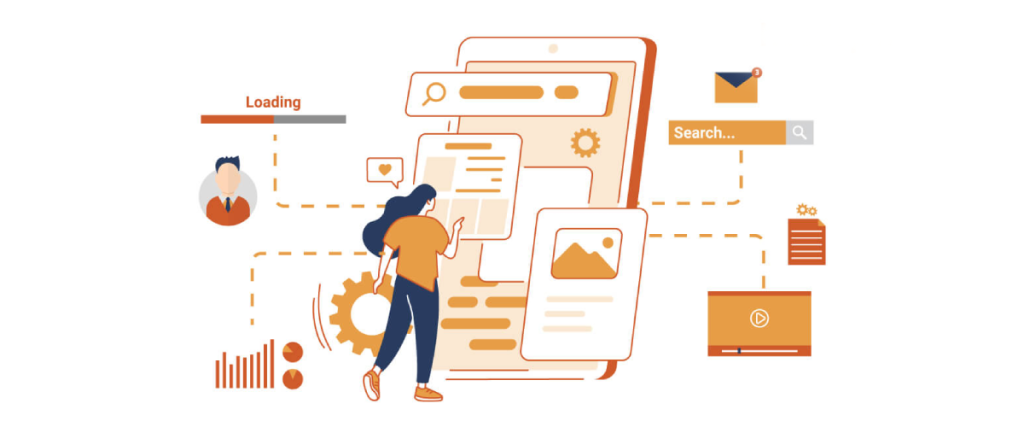
Improving your site’s user experience is crucial for keeping visitors engaged and encouraging them to return. One of the simplest ways to enhance user experience is by focusing on website speed. Users expect a fast-loading site, and if your pages take too long to load, they are likely to leave in frustration. Ensure your images are optimized and the code is clean. Tools like Google PageSpeed Insights can help you identify which elements are slowing down your site. Besides speed, the structure of your website plays an important role.
A well-organized site should have a clear navigation system that allows users to find what they need without hassle. Use headings, subheadings, and a logical layout to guide visitors through your content. Additionally, consider implementing a search feature so users can easily locate specific information. A seamless browsing experience reduces stress for visitors and increases the chances that they will explore more pages on your site. Lastly, don’t forget about mobile optimization. With many users accessing sites through smartphones and tablets, ensuring your site is responsive across devices can significantly improve user satisfaction.
Another effective way to enhance your site’s user experience is through the use of visuals. People are naturally drawn to images and videos, which can break up text and make the content more engaging. Consider incorporating relevant visuals, such as infographics, diagrams, or tutorial videos, to complement your written content. Good visual design can aid understanding and make complex information more digestible.
Furthermore, it’s essential to maintain a consistent style across your visuals. This includes using a cohesive color palette and typography that aligns with your brand, creating a professional look. Alongside visuals, remember that readability is key. You want to ensure your text is easy to read by choosing appropriate font sizes, line spacing, and contrast. Avoid cluttered layouts that can overwhelm users. Instead, embrace white space as it helps guide the eye and makes the content less intimidating. Engaging visuals paired with thoughtful design can transform your website into an inviting space that invites exploration, leading to better user experiences and longer visits.
User feedback is a valuable resource when seeking to improve website usability. Taking the time to listen to what your visitors are saying can provide insight into what aspects of your site they find confusing or frustrating. You could implement feedback forms or conduct surveys that users can fill out quickly. Additionally, pay attention to analytics data on your site to identify trends that may indicate areas for improvement. For instance, if users frequently exit from certain pages or sections, it might signal that those parts need a redesign or clearer information.
Encourage open dialogue with your users by creating channels for communication, such as social media or a community forum. Responding to feedback and making necessary adjustments not only improves the user experience but also promotes a sense of trust and engagement with your audience. Moreover, keeping users informed about enhancements based on their suggestions can make them feel valued and lead to stronger brand loyalty. Remember that user experience is an ongoing process, and regularly seeking and utilizing feedback can keep your website fresh and user-friendly.
Another important strategy to enhance your site’s user experience is to ensure content is relevant and valuable to your audience. Create high-quality, useful content that meets the needs of your target audience. Conduct research to understand the topics and questions that matter most to your users. This can help you tailor content that not only attracts visitors but keeps them engaged. Regularly update your site with fresh content to give users a reason to return.
Also, consider categorizing your content into easy-to-navigate sections, such as blogs, articles, tutorials, or resources, making it easier for visitors to find what they’re looking for. Alongside rich content, integrate calls-to-action (CTAs) that are clear and compelling. Encouraging users to sign up for newsletters, download resources, or explore related content can enhance user interaction and extend session duration. Ultimately, prioritizing relevant content drives user engagement and leaves visitors with a favorable impression of your site. By focusing on the quality and accessibility of your content, you create a positive environment that invites users to explore further and remain connected.
The implementation of accessibility features on your website is another essential step to improving user experience. It’s important to recognize that your audience is diverse, including users with disabilities who may face challenges when navigating your site. Incorporating accessibility standards, such as the Web Content Accessibility Guidelines (WCAG), ensures that everyone can access and understand your content. For instance, using alternative text for images allows screen reader users to comprehend what’s visually presented, while proper contrast ratios help users with visual impairments read your text.
Additionally, offering keyboard navigation options expands usability for individuals who may not use a mouse. Make sure your site is compatible with various assistive technologies. Conduct accessibility testing to identify and resolve potential barriers. In doing so, you not only enhance the experience for users with disabilities but also improve overall usability for everyone. By making your site more inclusive, you demonstrate a commitment to diverse audiences and foster a positive reputation within the community. Ultimately, prioritizing accessibility contributes to a better user experience and helps you reach a wider audience, benefiting both users and your brand.

